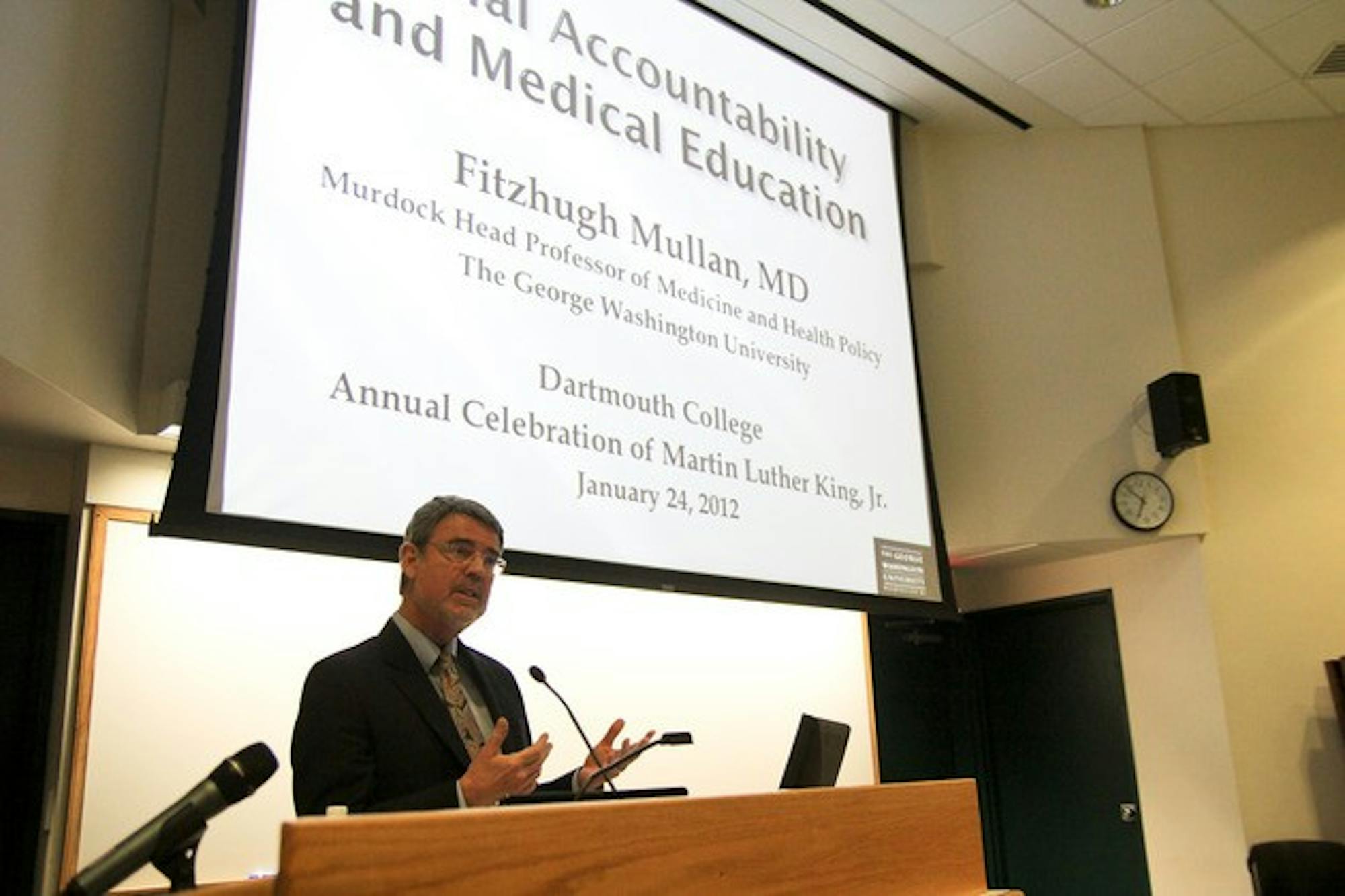After devoting himself to civil rights work during the summer of 1965, Mullan divided his time at the University of Chicago Medical School between civil rights activism and academics, he said. Looking to the ideals of Martin Luther King, Jr. and prominent Chicago community organizer Saul Alinsky for guidance, he and his fellow students marched in protest and lab coats.
Following requests by Mullan, Alinsky addressed the group of protesting students. King declined in a "courteous" letter in which he misspelled Mullan's name.
"When you get a letter from a great man and he misspells your name, it takes a little of the bloom off," Mullan said. "But it was still very exciting and I still have the letter."
In a 2010 study co-authored by fellow doctors at schools throughout the country and published in the journal Annals of Internal Medicine, Mullan sought to measure the current state of social consciousness at medical schools. The study "The Social Mission of Medical Education: Ranking the Medical Schools" evaluated medical colleges based on the social justice work undertaken by their graduates, according to Mullan.
In order to determine levels of "social justice," Mullan and his team ranked schools by the number of minority students they admitted and by the percentages of graduates working as primary care physicians or in underserved areas. "Prominent" institutions such as Vanderbilt University, Stony Brook University and New York University medical schools all ranked relatively low on the list, according to Mullan. Historically African-American and "comparatively unknown" schools fared the best, he said.
The findings stirred controversy among critics in the field, Mullen said. The president of the American Association of Medical Colleges called the findings "inaccurate," and a New York Times editor declined to run a story on New York medical schools' place "at the back of the pack," according to Mullan.
While some commentators faulted the study for failing to include the philanthropy pursued by medical students during their studies and the research conducted at medical schools, Mullan said these proposed metrics would fail to address the concerns of the study.
"We're trying to measure what kind of students these schools produce," he said. "Lots of places do research, but only medical schools can make doctors."
Some critics also objected to the high placement of historically African-American schools due to the traditionally high rate of minority students who enroll. This complaint provoked a reaction from Morehouse College and other top-scoring schools.
"They said, Wait, so it only counts if the Ivy League schools are on top, and if we do well it's an invalid study?'" he said. "And I think that's a conversation we need to have."
Mullan is now working on a study on non-traditional medical schools and their success at inculcating a sense of a "social mission" in graduates.
Dankwa-Mullan who works on the integration of research and policy for the National Institute of Minority Health and Health Disparities also connected the civil rights movement to her discussion of the relationship between social, psychological and biological determinants of health. Her overview of the history of social research on health began with W.E.B. DuBois's essay "The Philadelphia Negro," which rejected the notion of inherent health disparities between races in favor of social reform as prerequisite for wellness, she said.
More recent research such as the Preston-Curve, which details the correlation between a country's per capita income and the life expectancy of its residents, has upheld DuBois' arguments, Dankwa-Mullan said.
She explained several graphs illustrating the advantages of high socioeconomic status in health metrics such as life-expectancy, infant mortality and infectious and chronic disease.
Some of the ill-effects of social disenfranchisement are obvious, such as malnutrition and exposure to environmental toxins, according to Dwanka-Mullan. However, physical illness and low socioeconomic status interact in complex and sometimes intergenerational ways, she said.
Mothers subjected to physical and psychological stressors often transfer the stressors to children, causing low birth weight, which is correlated to a host of metabolic and cardiovascular diseases, she said. Policy decisions affecting factors ranging from access to fresh fruit and public transportation to the prevalence of parks and liquor stores can determine the health of future generations from gestation onwards, she said.




